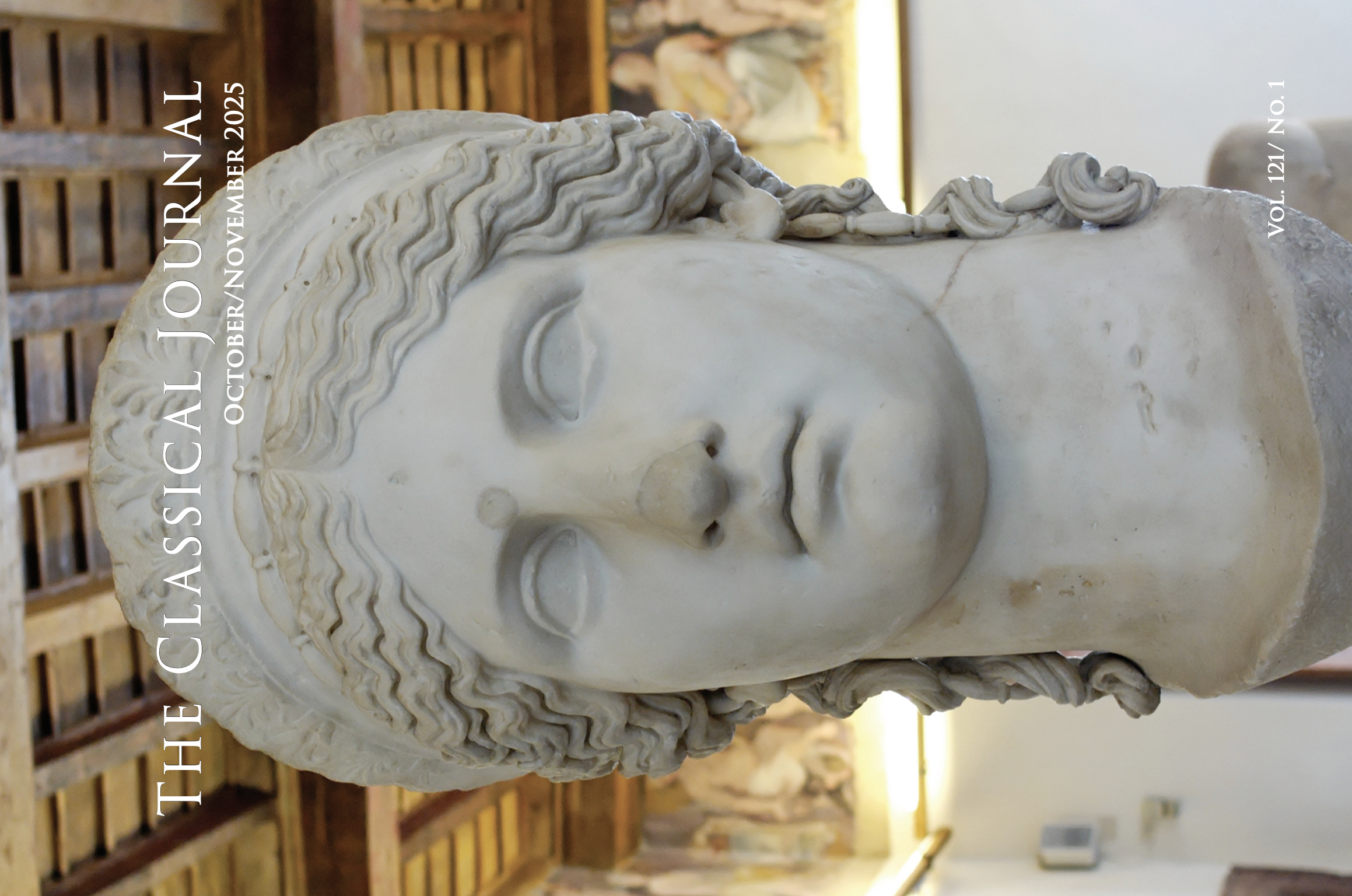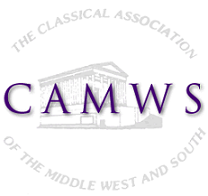The following articles are contained in CJ
116.1
Abstracts of Articles
More than a Sex-Strike: A Case of Medical Pathology in Aristophanes' Lysistrata
In this article, I consider the sex-strike in Lysistrata in the light of contemporary medical theories. I suggest that the young women who perform the sex-strike feature as (symbolic) Hippocratic patients who struggle with the symptoms of the condition of the “wandering womb.” Although some scholars have noted the medical vocabulary with regard to male pathology in Lysistrata, there is no study to date which considers the female sex-strike in the context of medical pathology. Through the perpetuation of the women’s pathological condition by means of the sex-strike and the overt manifestation of their disease, men are forced to comprehend fully and appreciate the importance of the reproductive role of women in the city. In this way, the traditional medical idea of the female as an unstable object, always in need of being brought into equilibrium and stability, is manipulated in the play by the women, who make the men realize the dangers their war policy entails: far from just threatening them with suspension of sex, the women force the men to face the real danger, sterility and cessation of reproduction.
Theocritus' Idyll 15: Mime, Metapoetics, and the Road
This paper argues that the first 43 lines of Theocritus’ Idyll 15 constitute a mime within a mime. It conforms to the formal features of other Hellenistic mimes and serves as foil for the rest of the poem, which departs from the conventions of the genre, engages in generic contamination and adopts typically Hellenistic metapoetic and aesthetic discourses. The evolution of the poem is reflected in its road-motif—as the women travel from the opening household setting to Ptolemy’s palace, the genre of the text evolves from a straightforward mime into a distinctly Hellenistic poem.
Hesiodic Patterns in Lucan: Cosmic and Civil Wars
This paper discusses Lucan’s reception of Hesiod, indicating how the Roman poet uses his predecessor to his own ends. It deals with the role of Hesiod in Lucan’s view of civil war as a manifestation of cosmic phenomena. Two Lucanian characters are given special emphasis: Figulus and Erictho. The article seeks to identify the effect obtained in specific passages through allusion to Hesiod and explain the importance of Hesiodic paradigms in defining more general structuring patterns in the Bellum Civile, in particular as regards the connections between the political and the cosmic spheres of the war(s) related by Lucan. It argues that the relationship between Lucan and Hesiod is relevant for our interpretation of both poets.
Answering the Natural Questions: Pliny's Ep. 4.30 and Ep. 8.20
This paper argues that Pliny the Younger activates specific intertexts to the third book of Seneca’s Naturales Quaestiones (NQ) as part of his self-fashioning. Seneca’s own epistolary and scientific prowess are recalled in Pliny’s careful and erudite letters, but Pliny also adds his own literary perspective to the genre of natural science. An analysis of Ep. 4.30 and 8.20 reveals how Pliny competes with Seneca’s literary and scientific auctoritas in order to create his own innovative response to the Naturales Quaestiones. In doing so, Pliny updates these mirabilia into fitting subjects for epistolary expression and for both intertextual and intratextual play. His handling of the material acts as useful lens to his persona and his perspective on the epistolary genre for fruitful philosophical and literary expression.


